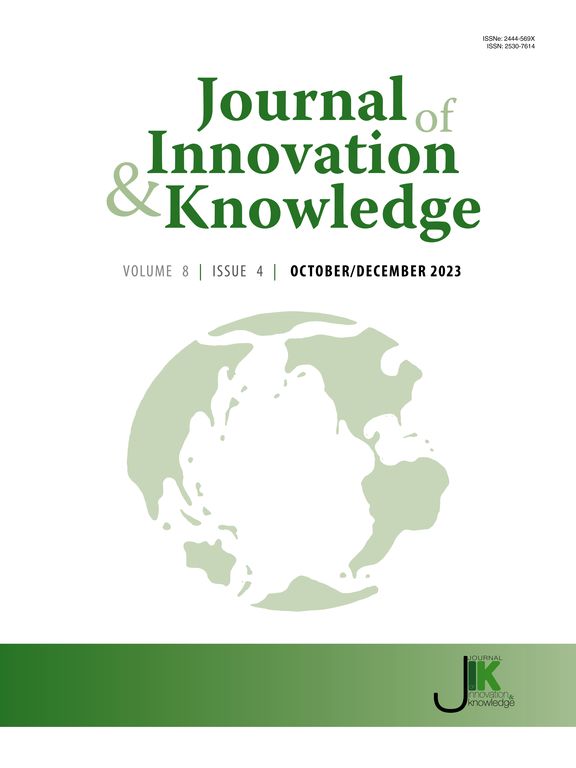Overcoming obstacles to innovation: Can an educated workforce help?
IF 15.6
1区 管理学
Q1 BUSINESS
引用次数: 0
Abstract
Firms face many obstacles in their pursuit of innovation. However, the mechanisms that enable firms to surmount these challenges and foster innovation are less understood. This study thus investigates whether the better performance of firms with higher human capital is due to their increased ability to overcome obstacles to innovation. Our estimation strategy accounts for the fact that facing obstacles is endogenous by correcting for the sample selection bias that is involved in determining which firms face obstacles. It appropriately estimates the impact of firms’ skill intensity on their propensity to innovate under two sets of circumstances—facing obstacles or not. Using a combination of rich survey and register data from over 2000 Danish firms for the period of 2006 to 2018, we also address several other biases that could affect our estimation of the impact of skill intensity on overcoming obstacles. Our results provide strong evidence that firms facing challenges in their innovation process are more likely to succeed when they have higher skill intensity. This applies to large and small firms as well as to firms in the service and manufacturing sectors, and it applies regardless of the type of innovation and, to some extent, which obstacles they face. Interestingly, we find that increasing skill intensity has no impact on the likelihood of innovation for firms that do not face obstacles. In contrast, firms that face obstacles can increase their likelihood of innovation by up to 25 %-points through higher skill intensity.
克服创新障碍:受过良好教育的劳动力能有所帮助吗?
企业在追求创新的过程中面临许多障碍。然而,使企业能够克服这些挑战并促进创新的机制却鲜为人知。因此,本研究探讨了具有较高人力资本的公司的较好绩效是否是由于他们克服创新障碍的能力增加。我们的估计策略通过纠正在确定哪些公司面临障碍时涉及的样本选择偏差,说明了面临障碍是内生的这一事实。它恰当地估计了在两种情况下——面临障碍或不面临障碍——企业技能强度对其创新倾向的影响。结合2006年至2018年期间来自2000多家丹麦公司的丰富调查和登记数据,我们还解决了其他几个可能影响我们对技能强度对克服障碍的影响的估计的偏见。我们的研究结果提供了强有力的证据,表明在创新过程中面临挑战的企业,当他们拥有更高的技能强度时,更有可能成功。这适用于大公司和小公司,也适用于服务和制造业部门的公司,无论创新的类型如何,在某种程度上也无论它们面临哪些障碍,这一点都适用。有趣的是,我们发现提高技能强度对没有面临障碍的企业的创新可能性没有影响。相比之下,面临障碍的公司可以通过提高技能强度将创新的可能性提高25%。
本文章由计算机程序翻译,如有差异,请以英文原文为准。
求助全文
约1分钟内获得全文
求助全文
来源期刊

Journal of Innovation & Knowledge
Multiple-
CiteScore
16.10
自引率
12.70%
发文量
118
审稿时长
37 days
期刊介绍:
The Journal of Innovation and Knowledge (JIK) explores how innovation drives knowledge creation and vice versa, emphasizing that not all innovation leads to knowledge, but enduring innovation across diverse fields fosters theory and knowledge. JIK invites papers on innovations enhancing or generating knowledge, covering innovation processes, structures, outcomes, and behaviors at various levels. Articles in JIK examine knowledge-related changes promoting innovation for societal best practices.
JIK serves as a platform for high-quality studies undergoing double-blind peer review, ensuring global dissemination to scholars, practitioners, and policymakers who recognize innovation and knowledge as economic drivers. It publishes theoretical articles, empirical studies, case studies, reviews, and other content, addressing current trends and emerging topics in innovation and knowledge. The journal welcomes suggestions for special issues and encourages articles to showcase contextual differences and lessons for a broad audience.
In essence, JIK is an interdisciplinary journal dedicated to advancing theoretical and practical innovations and knowledge across multiple fields, including Economics, Business and Management, Engineering, Science, and Education.
 求助内容:
求助内容: 应助结果提醒方式:
应助结果提醒方式:


